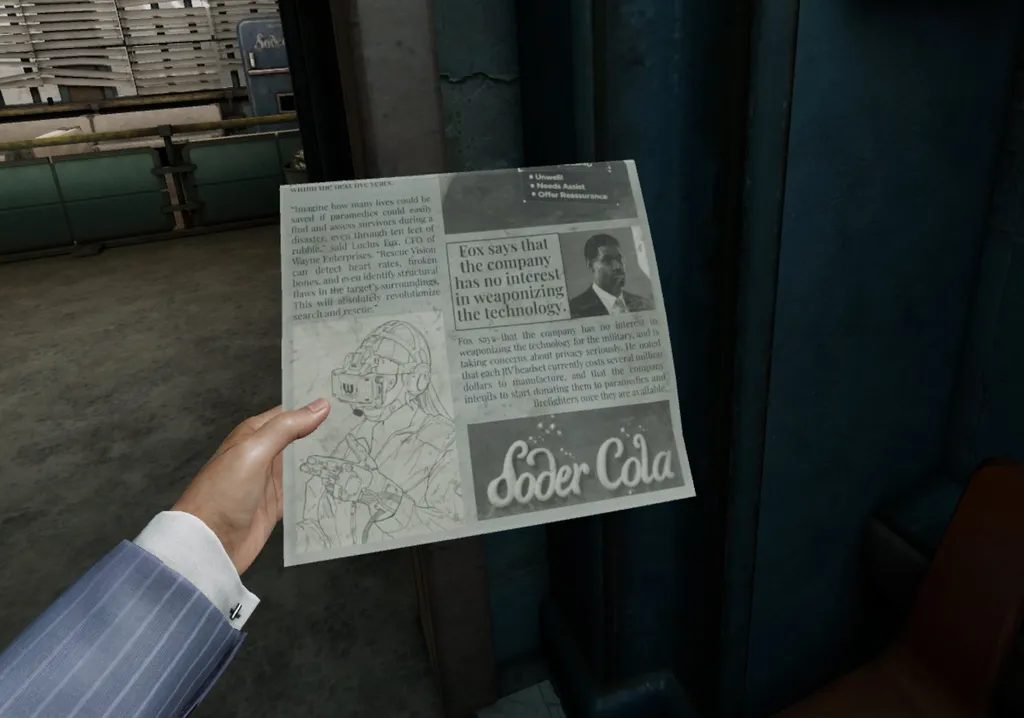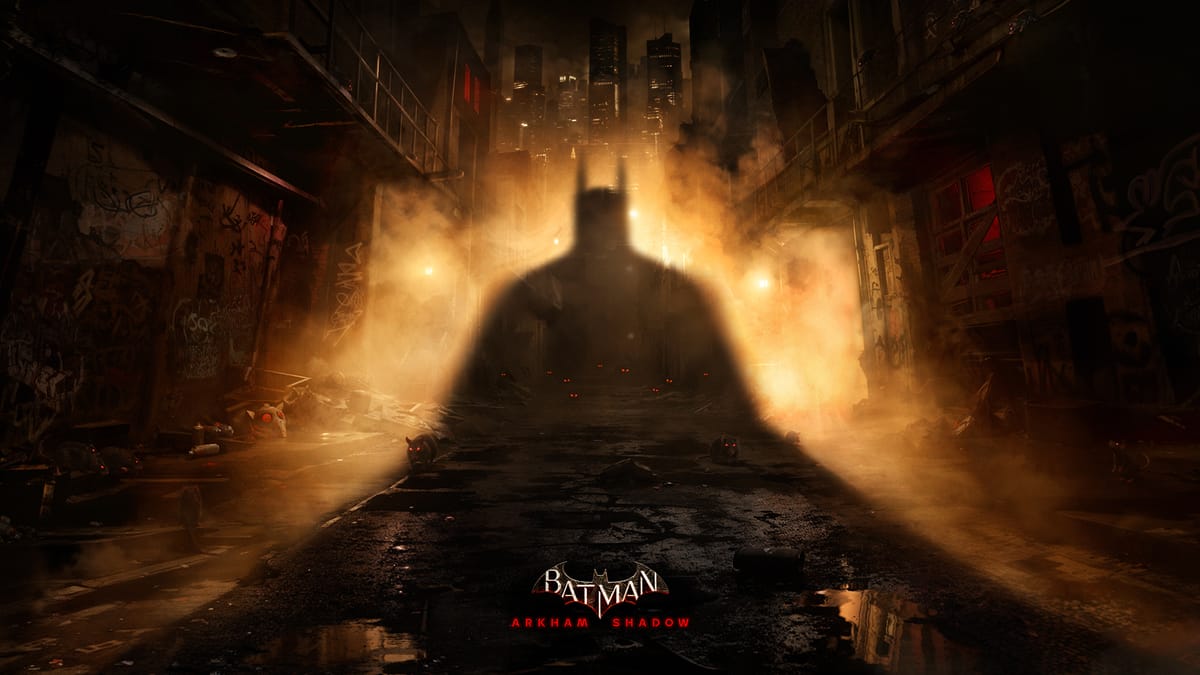Most days for more than a year, Ryan Payton would get up early in Japan to manage a production process spanning four vastly different time zones, eventually downloading a new build of Batman: Arkham Shadow to play in his VR headset and making notes with his team to kick off the next round of revisions.
Camouflaj's founder and studio head said they changed up the process for building the game about three years into the four-year development cycle, when Payton says they had Arkham Shadow playable from start to finish in a pre-alpha state.
"We’d meet every day for at least an hour discussing ideas, assigning work and problem solving to get this game out the door," Payton said. “When you laid out the entire game, you saw that we had something very special, but you also very quickly identified the fact that the story wasn't as cohesive as it needed to be. We had lots of work to do across all disciplines, but from a writing perspective and a story perspective, we knew that we had to make sure that the game was more cohesive and we had to infuse the game with more authentic Arkham elements.”
The regular story call included writing staff like Camouflaj’s Narrative Director Brendan Murphy (the main writer for Republique and Iron Man VR) as well as lead writer Alexander O. Smith (Vagrant Story, Final Fantasy XII, Ori and Will of the Wisps) alongside Christopher Sims, James Howell and Christos Gage who each have lengthy lists of previous work of their own before taking on Batman’s mythos.
We took a deep dive with Payton in a recent call and follow-up emails into how they made one of VR’s best titles by focusing in on the process behind the creation of a specific late-game asset which caught the eyes of our reviewer Henry Stockdale as he finished out the campaign.
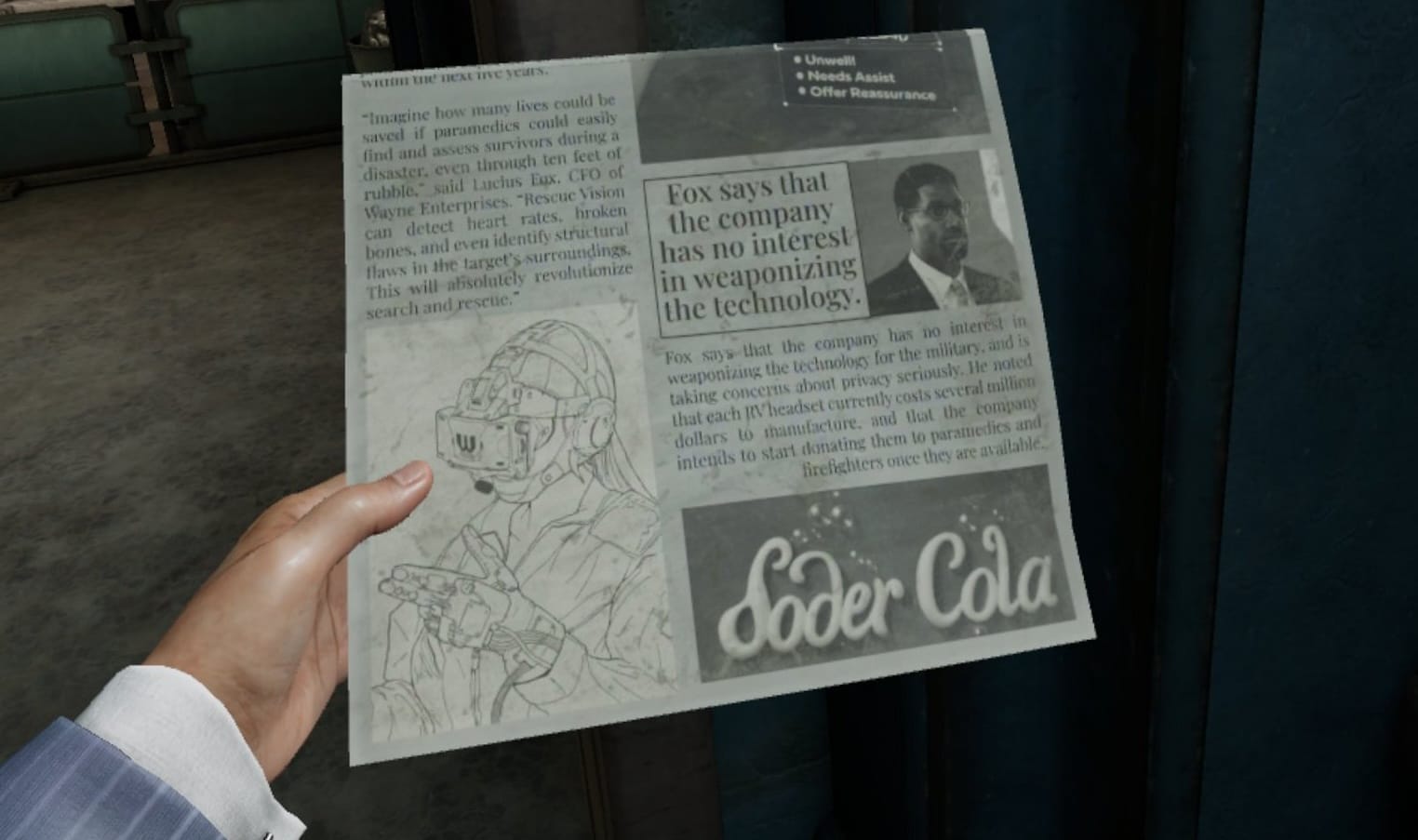
The asset is a newspaper you can pick up in the game featuring a story with WayneTech head Lucius Fox shooting down the idea of a militarized version of Batman’s Detective Vision. Instead, Bruce Wayne’s company reveals Rescue Vision, a VR headset-like technology intended for first responders to help those in need even through the rubble of a fallen building.
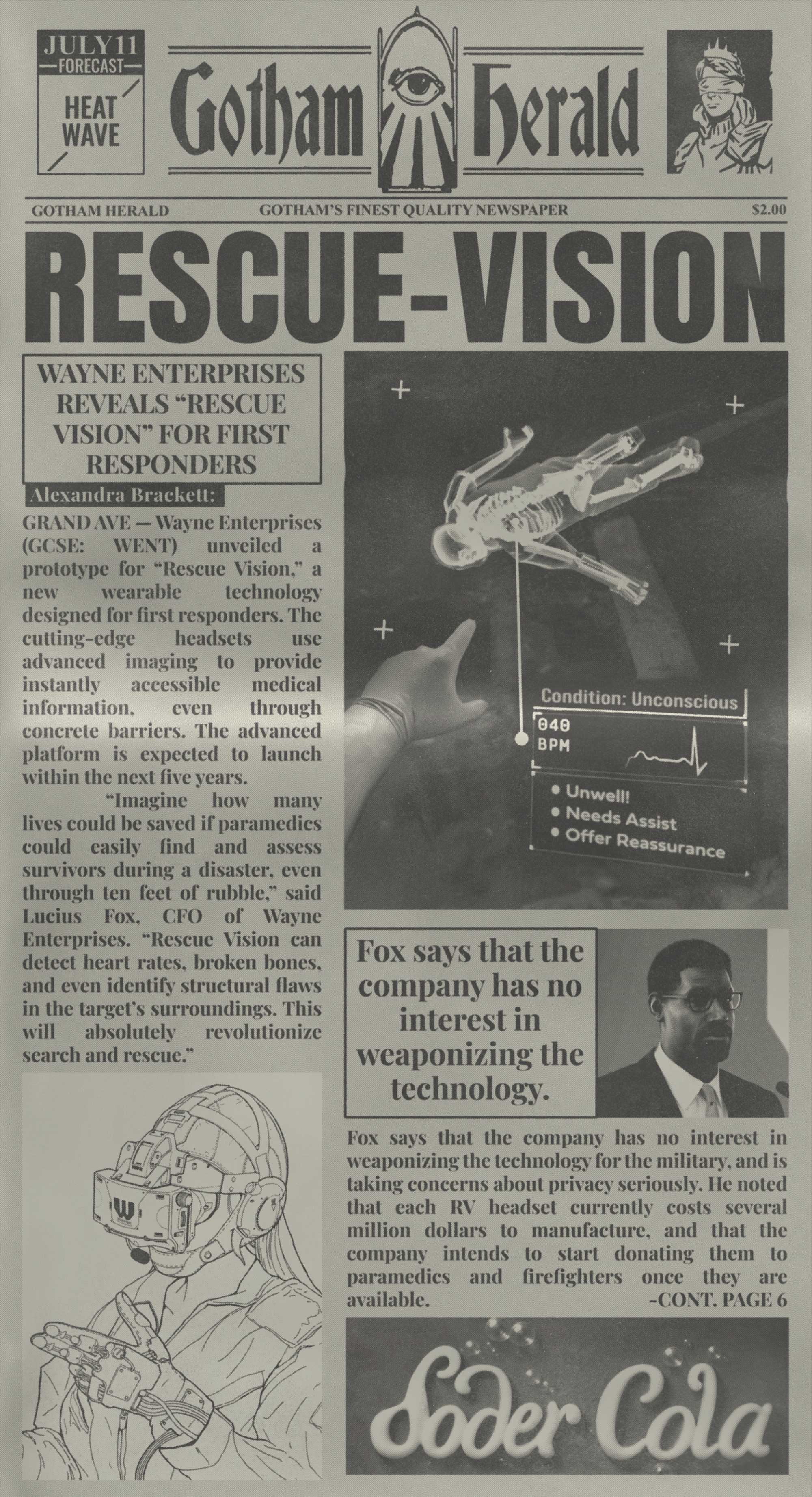
“Fox says that the company has no interest in weaponizing the technology for the military, and is taking concerns about privacy seriously,” the article reads. “He noted that each RV headset currently costs several million dollars to manufacture, and that the company intends to start donating them to paramedics and firefighters once they are available.”
The storytelling element nods to the Arkham series' Detective Vision and even The Dark Knight’s Sonar lenses while also reflecting the real-world uses of VR headset technology with passthrough AR features. It’s a tiny piece of a game that might be glossed over by some players, but it’s also a detail that adds important texture to its world in the same way Half-Life: Alyx did in 2020.
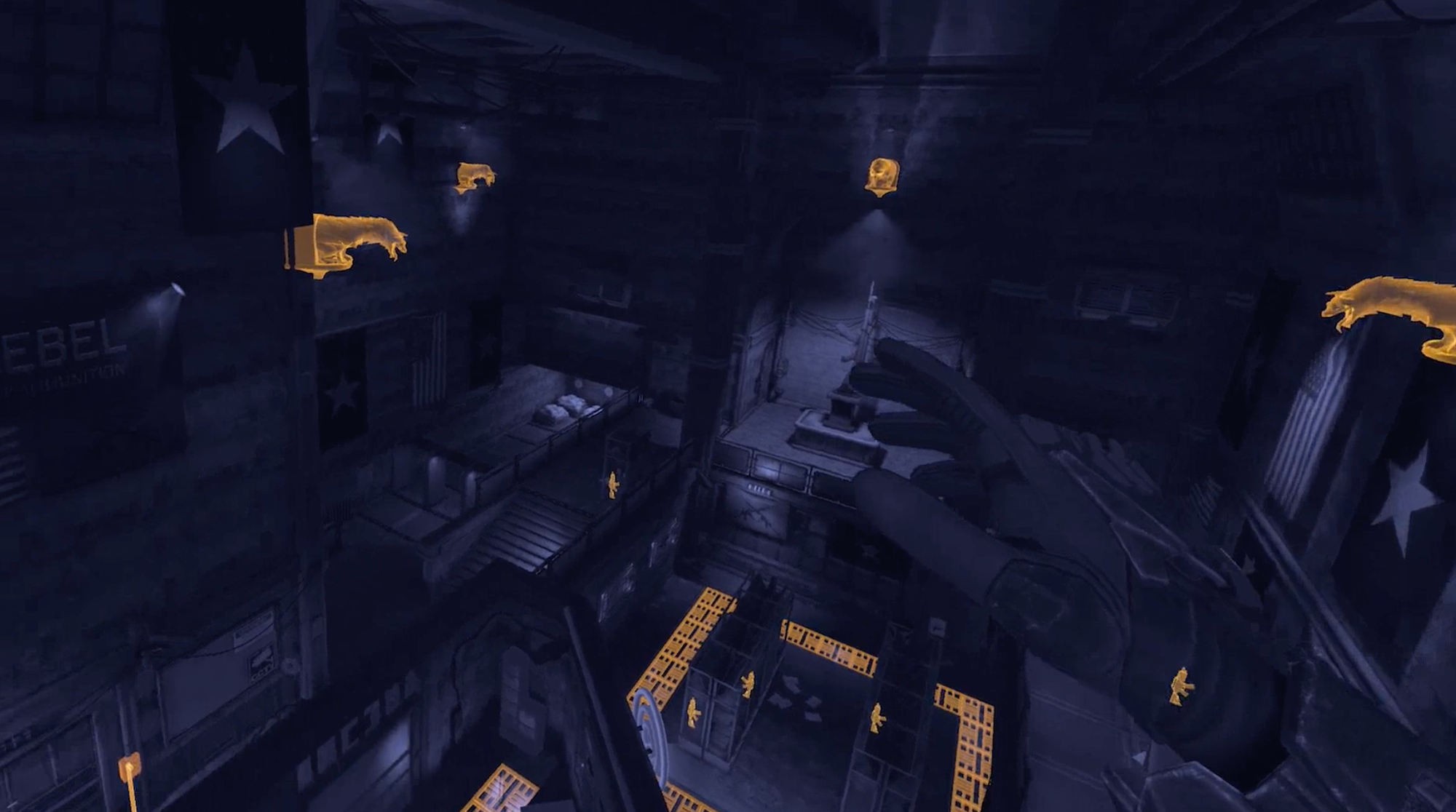
"I had a test room that the team would prepare for me they would update very frequently where I had multiple different types of newspaper props to grab, to then be able to test whether or not I could grab it on the side here [because] I want to see what's on the back of the newspaper," Payton explained about the newspapers themselves, with each edition shown on a different in-game day reflecting the story's events. "Also testing the different text clarity settings we could do to make sure it was legible on the Quest 3 and the Quest 3S."
The page layout and design comes from illustrator and 2D artist Jacob Briggs, who partnered with Sims for the newspaper copy.
"The idea for Rescue-Vision was to be a hopeful piece of news about WayneTech having a positive impact on the world, softening the age-old complaint that Bruce Wayne only spends money on technology that serves Batman,” Briggs said.
The diagram in the corner of the page was created by concept artist Bryan Flynn, with previous works including Doom and Aliens: Fireteam Elite. He took inspiration from Nintendo’s Power Glove and NASA’s Virtual Visual Environmental Display from the late 1980s.
“With Rescue-Vision my focus was making something that felt slightly older sci-fi, a little bit clunky (compared to today) but with clean shapes, some exposed wiring and fancier strapping to fit the look of a premium cutting edge product Wayne Enterprises would develop,” Flynn explained.
"My approach to the newspapers found throughout the game was to show how the world is turning and evolving outside of our main narrative,” Briggs said. “Despite where the adventure takes Batman, Gotham's heart continues to beat. With how long it’s been since the last Arkham game, we wanted to add some nice touchstones to characters who aren’t included in the mainline Arkham Shadow. The newspapers scattered throughout the game allowed us to move those characters’ stories forward."
With staff spread across four time zones in the UK, New York, Seattle and Japan, Payton said that splitting development globally incurred some inefficiencies. For instance, if an issue would surface with the developers in Seattle needing someone in a different time zone to give direction. But Payton also suggested he bent his own schedule in Japan to bridge this divide as often as he could, starting with an early rise at 4:30 am local time for story calls and then ending with reviews of the game with his team as late as 10 pm some days.
When production started on Arkham during the early days of the pandemic, Payton was still living in Seattle. During a visit to friends and family in Japan, though, he found himself more productive with so much of the team offline during his workday.
“During the pandemic, when everybody started going remote, I was living in Seattle but I traveled back to Japan to visit friends and family, and I noticed how productive I was because I was using the time difference to my advantage for team productivity,” Payton explained. “I like to start and work early in the morning and I have plenty of overlap with the team in the United States, which is where the primary contingent of Camouflaj is. And then I would start reviewing and giving feedback on the build while they're all sleeping…by the time Seattle wakes up, some work has passed into four different time zones, and it's gotten four different improvements before it goes back to Seattle.”
Payton used Quest’s casting feature to PC, and then relayed that view over a video call to others including design director Bill Green working from outside London. They used a workflow developed by Japan-based Matt Walker to timestamp reviews with Green and Payton speaking over relevant clips.
“We would get a build, Seattle was finished with it, I waited for it to upload. It's probably 3:00 or 4:00 PM here in Japan. And then we would just review the game till about eight or nine, sometimes 10:00 PM. And then so when Seattle woke up and New York woke up, they had typically 200 to 300 notes from me. Every. Single. Night.”
After releasing Arkham’s VR return last month to wide acclaim, Camouflaj’s full team of 75 people continues to work through a lengthy list of additions and fixes. Payton explained those planned updates include a character viewer, new challenge maps for both Combat and Predator modes, and general quality of life improvements. There's also a new game+ mode they're "seriously considering" but won't fully commit to yet.
“Game development is difficult and you have good days and you have bad days and then, suddenly, it's out there and people are saying really wonderful things about the work that you've done over the last four years and so that feels really really good,” Payton said. “We also feel like we're not finished.”

